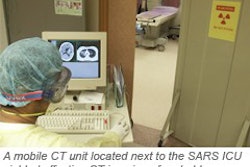(Radiology Review) Radiologists at Harvard Medical School in Boston performed a metaanalysis to compare CT colonography to virtual colonoscopy for diagnosing colorectal polyps.
Dr. Jacob Sosna and colleagues searched for research articles comparing the two modalities, and found 14 studies that fulfilled the inclusion criteria. A total of 1,324 patients with 1,411 polyps were included in those studies. Sosna’s group reported their results in the American Journal of Roentgenology.
According to the authors, colorectal cancer is the second highest cause of death in the USA, and most carcinomas arise from polyps. A cost-effective method of detection with good patient acceptance is essential, and much research is currently investigating whether CT colonography might provide the necessary sensitivity.
For polyps 10 mm or larger the average pooled sensitivity per patient was 88%; for polyps 6-9 mm the sensitivity was 84%; and for polyps 5 mm or smaller it was 65%.
"The pooled per-polyp sensitivity for polyps 10 mm or larger was 81%, for polyps 6-9 mm it was 62%, and for polyps 5 mm or smaller it was 43%," the authors determined. There was a positive correlation between sensitivity for detection of polyps and polyp size. The pooled overall specificity for detection of polyps larger than 10 mm was 95%," they reported.
"The specificity and sensitivity of CT colonography are high for polyps larger than 10 mm," they concluded. Collectively, the body of published research in this area showed CT colonography to be an accurate tool for detecting colorectal polyps of clinical significance. "The metaanalysis of the literature we conducted justifies large-scale studies to validate the results obtained," they suggested.
CT colonography of colorectal polyps: a metaanalysis Jacob Sosna, et. al. Department of radiology, Beth Israel Deaconess Medical Center, Harvard Medical School, 330 Brookline Ave., Boston, MA AJR 2003 December; 181:1593-1598 By Radiology ReviewJanuary 22, 2004
Copyright © 2004 AuntMinnie.com




















